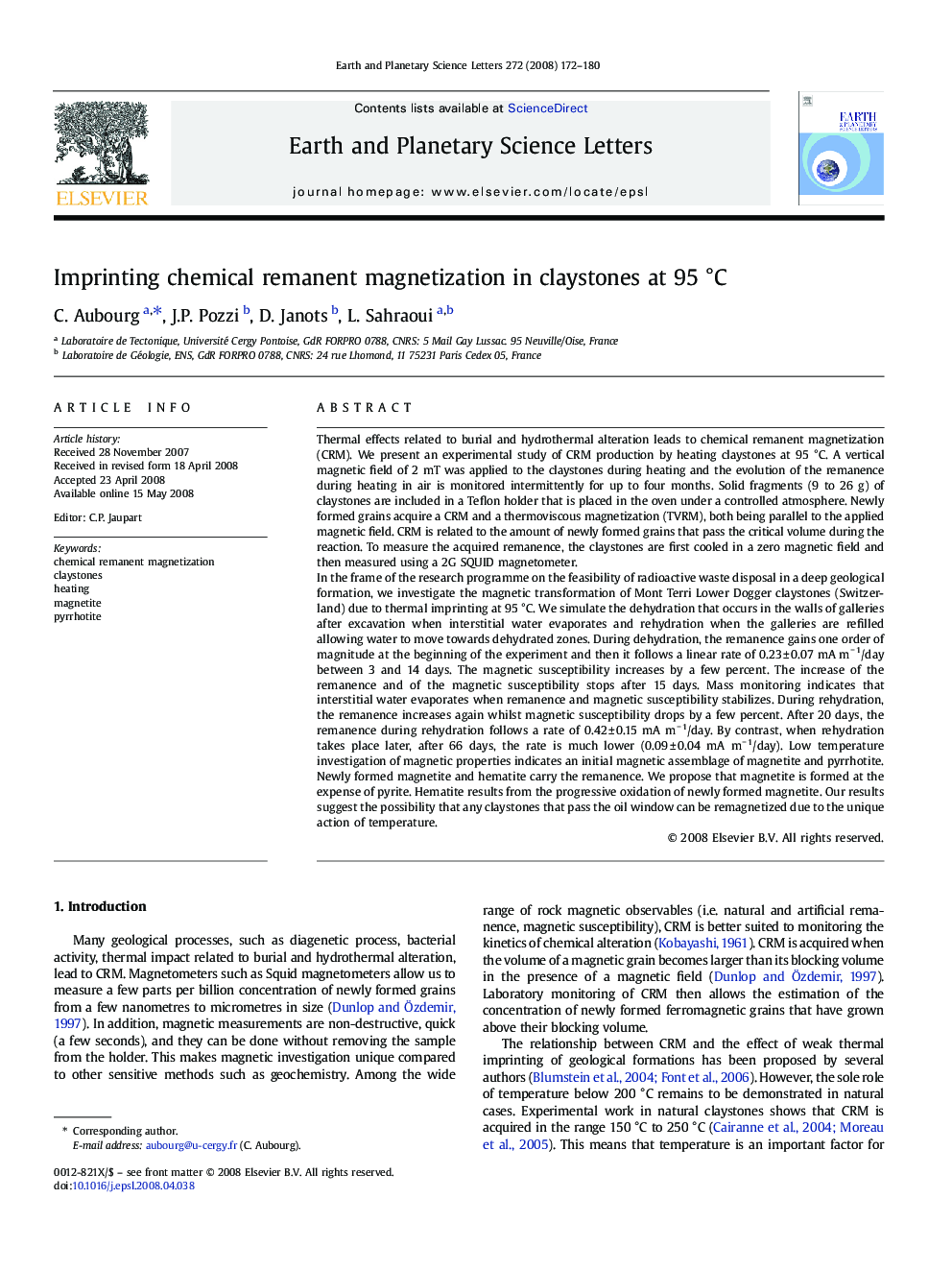| Article ID | Journal | Published Year | Pages | File Type |
|---|---|---|---|---|
| 4679694 | Earth and Planetary Science Letters | 2008 | 9 Pages |
Abstract
In the frame of the research programme on the feasibility of radioactive waste disposal in a deep geological formation, we investigate the magnetic transformation of Mont Terri Lower Dogger claystones (Switzerland) due to thermal imprinting at 95 °C. We simulate the dehydration that occurs in the walls of galleries after excavation when interstitial water evaporates and rehydration when the galleries are refilled allowing water to move towards dehydrated zones. During dehydration, the remanence gains one order of magnitude at the beginning of the experiment and then it follows a linear rate of 0.23 ± 0.07 mA mâ 1/day between 3 and 14 days. The magnetic susceptibility increases by a few percent. The increase of the remanence and of the magnetic susceptibility stops after 15 days. Mass monitoring indicates that interstitial water evaporates when remanence and magnetic susceptibility stabilizes. During rehydration, the remanence increases again whilst magnetic susceptibility drops by a few percent. After 20 days, the remanence during rehydration follows a rate of 0.42 ± 0.15 mA mâ 1/day. By contrast, when rehydration takes place later, after 66 days, the rate is much lower (0.09 ± 0.04 mA mâ 1/day). Low temperature investigation of magnetic properties indicates an initial magnetic assemblage of magnetite and pyrrhotite. Newly formed magnetite and hematite carry the remanence. We propose that magnetite is formed at the expense of pyrite. Hematite results from the progressive oxidation of newly formed magnetite. Our results suggest the possibility that any claystones that pass the oil window can be remagnetized due to the unique action of temperature.
Related Topics
Physical Sciences and Engineering
Earth and Planetary Sciences
Earth and Planetary Sciences (General)
Authors
C. Aubourg, J.P. Pozzi, D. Janots, L. Sahraoui,
